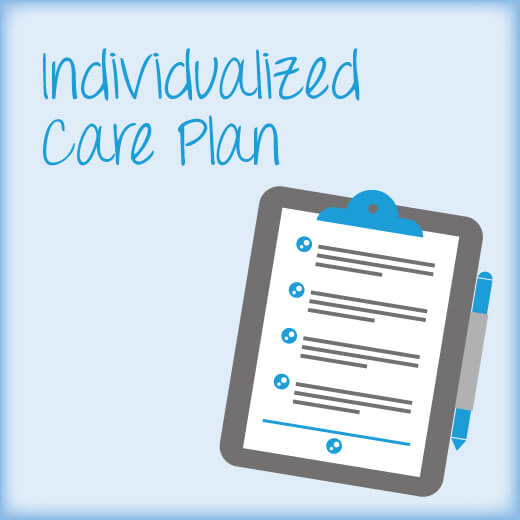
In 2020 I reviewed a product kit (instructional guide and cards) from SPELL-Links™ Learning By Design, Inc. entitled Wordtivities: Word Study Instruction for Spelling, Vocabulary, and Reading. Today, I am reviewing a companion to that product kit: SPELL-Links™ Wordtivities Word Lists. This 180-page guide contains sets of pattern-focused word lists for whole class, small group, and 1:1 word study instruction purposes. Each grade-level word list supports the simultaneous development of pattern-specific phonological (sound), orthographic (letter), and semantic morphological (meaning) skills. The aim of this guide is to systematically address spelling, reading, speaking, and listening all together by developing a neural network for literacy and language.
SPELL-Links™ Wordtivities Word Lists are useful for students 5+ years of age who have or are in the process of developing the following knowledge and skills:
- Letter-name knowledge
- Alphabetic letter writing ability
- Mastery of early phonological awareness (PA) skills by being able to segment words into syllables, understand and create rhyming words, and isolate sounds in words
- Basic concept knowledge of directionality (left/right; top/down)
The book is organized by patterns and grade levels (K-6 grade) and by the instructional focus. For each pattern, word lists are organized to support a specific instructional focus: phonological code, orthographic code, morphological code, storage and retrieval of orthographic representations, and writing application.

The Word Lists feature 128 patterns across grades K through 6. The number of patterns taught at each grade level ranges from 9 (K) to 25 (grades 4 and 5).
Here’s an example of a 4th-grade instructional overview:
Overview of Weekly Instruction . . . . . . . . . . . . . . . . . . . . . . . . . . . . . . . . . . . . . . . . . . . . . . . . . . . . . . . 88
Pattern: Prefixes pre- (before); mid- (middle); post- (after) . . . . . . . . . . . . . . . . . . . . . . . . . . . . . . . . 91
Pattern: Prefixes over- (above, more than); super- (superior, exceeding); under- (below, less than);
sub- (under, subordinate) . . . . . . . . . . . . . . . . . . . . . . . . . . . . . . . . . . . . . . . . . . . . . . . . . . . . . . . . . 92
Pattern: ‘l, r’ Clusters ‘lb, ld, lf, lk, lm, lp, lt, lth, lve, lse’ . . . . . . . . . . . . . . . . . . . . . . . . . . . . . . . . . . 93
Pattern: ‘l, r’ Clusters ‘rd, rf, rm, rn, rp, rt, rsh, rch, rth, rve, rge’ . . . . . . . . . . . . . . . . . . . . . . . . . . . . 94
Pattern: ‘l, r’ Clusters ‘rse, rce’ . . . . . . . . . . . . . . . . . . . . . . . . . . . . . . . . . . . . . . . . . . . . . . . . . . . . . . . 95
Pattern: Homophones Set 1 . . . . . . . . . . . . . . . . . . . . . . . . . . . . . . . . . . . . . . . . . . . . . . . . . . . . . . . . . . 96
Pattern: Suffixes -ion, -ation, -ition (N) . . . . . . . . . . . . . . . . . . . . . . . . . . . . . . . . . . . . . . . . . . . . . . . . 97
Pattern: Suffix -ment (N) . . . . . . . . . . . . . . . . . . . . . . . . . . . . . . . . . . . . . . . . . . . . . . . . . . . . . . . . . . . . 98
Pattern: Suffix -en (V, ADJ) . . . . . . . . . . . . . . . . . . . . . . . . . . . . . . . . . . . . . . . . . . . . . . . . . . . . . . . . . . . 99
Pattern: ‘m, n, ng’ Clusters ‘nd, nt, mp, mph, nth, nch, ngth, nge’ . . . . . . . . . . . . . . . . . . . . . . . . . 100
Pattern: ‘m, n, ng’ Clusters ‘nk, nc’ . . . . . . . . . . . . . . . . . . . . . . . . . . . . . . . . . . . . . . . . . . . . . . . . . . . 101
Pattern: ‘m, n, ng’ clusters ‘nce, nse’ . . . . . . . . . . . . . . . . . . . . . . . . . . . . . . . . . . . . . . . . . . . . . . . . . 102
Pattern: Homophones Set 2 . . . . . . . . . . . . . . . . . . . . . . . . . . . . . . . . . . . . . . . . . . . . . . . . . . . . . . . . 103
Pattern: Syllabic-r Vowel Sound as in bird, father . . . . . . . . . . . . . . . . . . . . . . . . . . . . . . . . . . . . . . . 104
Pattern: Suffix -ward (ADJ, ADV) . . . . . . . . . . . . . . . . . . . . . . . . . . . . . . . . . . . . . . . . . . . . . . . . . . . . . 105
Pattern: Unstressed Vowels . . . . . . . . . . . . . . . . . . . . . . . . . . . . . . . . . . . . . . . . . . . . . . . . . . . . . . . . 106
Pattern: Syllabic-l Vowel Sound as in bottle, pencil . . . . . . . . . . . . . . . . . . . . . . . . . . . . . . . . . . . . . 107
Pattern: Suffix -al (ADJ) . . . . . . . . . . . . . . . . . . . . . . . . . . . . . . . . . . . . . . . . . . . . . . . . . . . . . . . . . . . . 108
Pattern: Suffixes -able, ible (ADJ) …………………………………………….. 109
Pattern: Suffix -ous (ADJ) . . . . . . . . . . . . . . . . . . . . . . . . . . . . . . . . . . . . . . . . . . . . . . . . . . . . . . . . . . . 110
Pattern: Suffixes -ive, -ative, -itive (N, ADJ)………………………………………. 111
Pattern: Suffix -ure (N) . . . . . . . . . . . . . . . . . . . . . . . . . . . . . . . . . . . . . . . . . . . . . . . . . . . . . . . . . . . . . 112
Pattern: Contractions . . . . . . . . . . . . . . . . . . . . . . . . . . . . . . . . . . . . . . . . . . . . . . . . . . . . . . . . . . . . . . 113
Pattern: Prefix tele- (far); micro- (tiny) . . . . . . . . . . . . . . . . . . . . . . . . . . . . . . . . . . . . . . . . . . . . . . . . 114
Pattern: Prefixes mono-, uni-, bi-, tri-, quad-, oct- (number affixes) . . . . . . . . . . . . . . . . . . . . . . . . 115
Pattern Review
The weekly instruction will look as follows:
- Monday-Tuesday: Review of Phonological and Orthographic Codes (these word pattern lists are organized into 3 groups to support differentiated instruction)
- Wednesday–Thursday: Morphology
- Friday: Mental Orthographic Representations and Application to Sentence Writing
The book comes with access to digital Materials Library, which contains access to the following materials:
- List of pattern-loaded stories
- SPELL-Links™ Pattern Inventory & Analysis Tool (PIAT)
The appeal of the product for me is that it offers numerous group-based opportunities for the solidification of evidence-based instructional practices. The book comes with very detailed implementation instructions. A variety of daily activities allow students to further advance their abilities in the areas of prefixes and suffixes, numerous homophones and clusters, unstressed vowels and even contractions. The kit also offers several appendices that review the spelling rules for word roots prefixes and suffixes, as well as detailed recommendations for pattern-loaded reading materials. To me, the appeal of this curriculum is rather multifaceted. It continues to be very difficult to find an evidence-based group instruction curriculum, and Wordtivities Word Lists once again fit the bill for it. Because it focuses on skills integration of spelling, reading, speaking, and listening it allows the students to engage in contextually based opportunities to become better listeners, speakers, readers, spellers and writers.
You can find this kit for purchase on the SPELL-Links™ Learning By Design, Inc. Store HERE.
And now for the fun part. Want to win your own copy of SPELL-Links™ Wordtivities Word Lists? Enter to win here: I want to win SPELL-Links Wordtivities Word Lists! | Learning By Design They’ll send one lucky person a copy of SPELL-Links™ Wordtivities Word Lists. Entries are accepted until 3/1/24 at 5 pm CST. The winner will be notified by email.
 Today I am reviewing a newly released (2019) kit (instructional guide and cards) from the Learning By Design, Inc. entitled Wordtivities:
Today I am reviewing a newly released (2019) kit (instructional guide and cards) from the Learning By Design, Inc. entitled Wordtivities:  Those of you familiar with my blog, know that a number of my posts take on a form of extended responses to posts and comments on social media which deal with certain questionable speech pathology trends and ongoing issues (e.g., controversial diagnostic labels, questionable recommendations, non-evidence based practices, etc.). So, today, I’d like to talk about sweeping general recommendations as pertaining to literacy interventions.
Those of you familiar with my blog, know that a number of my posts take on a form of extended responses to posts and comments on social media which deal with certain questionable speech pathology trends and ongoing issues (e.g., controversial diagnostic labels, questionable recommendations, non-evidence based practices, etc.). So, today, I’d like to talk about sweeping general recommendations as pertaining to literacy interventions.  Because the children I assess, often require supplementary reading instruction services, many parents frequently ask me how they can best determine if a reading specialist has the right experience to help their child learn how to read. So today’s blog post describes what type of knowledge reading specialists ought to possess and what type of questions parents (and other professionals) can ask them in order to determine their approaches to treating literacy-related difficulties of struggling learners.
Because the children I assess, often require supplementary reading instruction services, many parents frequently ask me how they can best determine if a reading specialist has the right experience to help their child learn how to read. So today’s blog post describes what type of knowledge reading specialists ought to possess and what type of questions parents (and other professionals) can ask them in order to determine their approaches to treating literacy-related difficulties of struggling learners.  Recently I wrote a blog post regarding how SLPs can
Recently I wrote a blog post regarding how SLPs can 
 Now let us select a few writing goals for this student.
Now let us select a few writing goals for this student. Today I want to talk treatment. That thing that we need to plan for as we are doing our assessments. But are we starting our treatments the right way? The answer may surprise you. I often see SLPs phrasing questions regarding treatment the following way: “I have a student diagnosed with ____ (insert disorder here). What is everyone using (program/app/materials) during therapy sessions to address ___ diagnosis?”
Today I want to talk treatment. That thing that we need to plan for as we are doing our assessments. But are we starting our treatments the right way? The answer may surprise you. I often see SLPs phrasing questions regarding treatment the following way: “I have a student diagnosed with ____ (insert disorder here). What is everyone using (program/app/materials) during therapy sessions to address ___ diagnosis?” There could be endless variations of how deficits manifest in poor readers. Is it aspects of phonological awareness, phonics, morphology, etc. What combination of deficits is preventing the child from becoming a good reader?
There could be endless variations of how deficits manifest in poor readers. Is it aspects of phonological awareness, phonics, morphology, etc. What combination of deficits is preventing the child from becoming a good reader? Reading Fluency: “LG’s reading fluency during this task was judged to be significantly affected by excessive speed, inappropriate pausing, word misreadings, choppy prosody, as well as inefficient word attack skills. While she was able to limitedly utilize the phonetic spelling of unfamiliar words (e.g., __) provided to her in parenthesis next to the word (which she initially misread as ‘__’), she exhibited limited use of metalinguistic strategies (e.g., pre-scanning sentences to aid text comprehension, self-correcting to ensure that the read words made sense in the context of the sentence, etc.), when reading the provided passage. To illustrate, during the reading of the text, LG was observed to frequently (at least 3 times) lose her place and skip entire lines of text without any attempts at self-correction. At times she was observed to read the same word a number of different ways (e.g., read ‘soup’ as ‘soup’ then as ‘soap’, ‘roots’ as ‘roofs’ then as ‘roots’, etc.) without attempting to self-correct. LG’s oral reading rate was also observed to be impaired for her age/grade levels. Her prosody was significantly adversely affected due to lack of adequate pausing for punctuation marks (e.g., periods, commas, etc.). Instead, she paused during text reading only when he could not decode select words in the text. Though, LG was able to read 70 words per minute, which was judged to be grossly commensurate with grade-level, out of these 70 words she skipped 2 entire lines of text, invented an entire line of text, as well as made 4 decoding errors and 6 inappropriate pauses.”
Reading Fluency: “LG’s reading fluency during this task was judged to be significantly affected by excessive speed, inappropriate pausing, word misreadings, choppy prosody, as well as inefficient word attack skills. While she was able to limitedly utilize the phonetic spelling of unfamiliar words (e.g., __) provided to her in parenthesis next to the word (which she initially misread as ‘__’), she exhibited limited use of metalinguistic strategies (e.g., pre-scanning sentences to aid text comprehension, self-correcting to ensure that the read words made sense in the context of the sentence, etc.), when reading the provided passage. To illustrate, during the reading of the text, LG was observed to frequently (at least 3 times) lose her place and skip entire lines of text without any attempts at self-correction. At times she was observed to read the same word a number of different ways (e.g., read ‘soup’ as ‘soup’ then as ‘soap’, ‘roots’ as ‘roofs’ then as ‘roots’, etc.) without attempting to self-correct. LG’s oral reading rate was also observed to be impaired for her age/grade levels. Her prosody was significantly adversely affected due to lack of adequate pausing for punctuation marks (e.g., periods, commas, etc.). Instead, she paused during text reading only when he could not decode select words in the text. Though, LG was able to read 70 words per minute, which was judged to be grossly commensurate with grade-level, out of these 70 words she skipped 2 entire lines of text, invented an entire line of text, as well as made 4 decoding errors and 6 inappropriate pauses.”
 When many of us think of such labels as “language disorder” or “learning disability”, very infrequently do adolescents (students 13-18 years of age) come to mind. Even today, much of the research in the field of pediatric speech pathology involves preschool and school-aged children under 12 years of age.
When many of us think of such labels as “language disorder” or “learning disability”, very infrequently do adolescents (students 13-18 years of age) come to mind. Even today, much of the research in the field of pediatric speech pathology involves preschool and school-aged children under 12 years of age.



